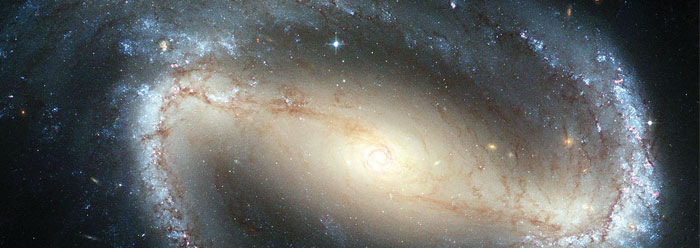"Glittering generalities"--a phrase describing grand, panoramic scenarios that sweep difficulties under the rug--appropriately describes theories of planetary evolution. They're not as simple as "add dust, stir, and wait." I remember a planetary science professor years ago admitting that planetary evolution models usually hit a snag where a miracle is needed to continue. Not much has changed, despite a wealth of new data--including the discovery of hundreds of extrasolar planets.
One would think such a discovery would bolster confidence in naturalistic theories. Planet-building, however, has become a theory in crisis. Most extrasolar systems look nothing like ours. Many have gas giants very close to the star. Some of these so-called "hot Jupiters" have smaller orbits than Mercury. They would likely eject any earthlike planets in the habitable zone.1 Scientists realize now that stellar dust disks are not planetary maternity wards, but conveyor belts of doom. Models show that a planet embedded in a dust disk at the orbit of Jupiter would spiral into its host star in mere thousands of years. Some disks appear to be dissipating rapidly.
A consequence is that planets need to form quickly to survive. Sure enough, theorists have found ways to make planets in less time. They now believe a gas giant can form in just hundreds of years, not millions. Indeed it must, if it is to avoid the giant sucking sound from the star at the center of the disk. Then, it needs to clear its orbit of debris quickly, so that inward migration will stop before the planet is devoured.2 A cleared orbit, however, has the downside of bringing accretion to a standstill.
Speaking of accretion, a planetesimal must grow to at least a kilometer in diameter for gravitational attraction to take over.3 Smaller clumps do not stick--they bounce. Rather than grow into boulders, they are more likely to collide and fragment.4 Even then, unless protected, boulders would be drawn rapidly into the star. A recent article on Space.com said the realization that "boulders tend to fall into the star in a celestial blink of an eye" has been "a stumbling block for 30 years."5 One recent model proposed that boulders might join forces against the viscosity of the disk, forming a protective pocket--like that behind a semi truck--giving embryonic planetesimals time to grow. The authors of this ad hoc speculation, however, worried that such clumped boulders would actually be more likely to grind to dust.6
In recent years, planetary scientists have been undergoing a kind of "religious conversion" from the nebular hypothesis to a completely new "disk-instability hypothesis."7 Championed by Alan Boss, it postulates that knots in the swirling cloud contract catastrophically to form gas giant planets almost instantly. This idea should raise the eyebrows of many who were taught to think planet formation requires millions of years. The new model was proposed less on evidence than on attempts to get around the difficulties.
This is only the beginning of a long list of "miracles" needed to build planets naturally. The extent to which God used natural forces to create is an interesting question, but it is important to know what materialists are up against lest we be mesmerized by the glitter of their generalities.
References
- Than, K. How Solar Systems Are Organized. Space.com, July 17, 2007; and The locked migration of giant protoplanets, Astronomy and Astrophysics press release, March 21, 2006.
- Mayer, L. et al. 2002. Formation of Giant Planets by Fragmentation of Protoplanetary Disks. Science 298 (5599): 1756- 1759.
- Paraskov, G. et al. 2007. Impacts into weak dust targets under microgravity and the formation of planetesimals. Icarus 191 (2): 779-789.
- Ibid.
- Mosher, D. Major Planet Formation Mystery Solved. Space.com, August 29, 2007.
- Ibid.
- Irion, R. 2003. When Do Planets Form? Inquiring Astronomers Want to Know. Science 300 (5625): 1498.
* David Coppedge works in the Cassini Program at the Jet Propulsion Laboratory. The views expressed are his own.
Cite this article: Coppedge, D. 2008. Nebulous Hypotheses. Acts & Facts. 37 (2): 15.




